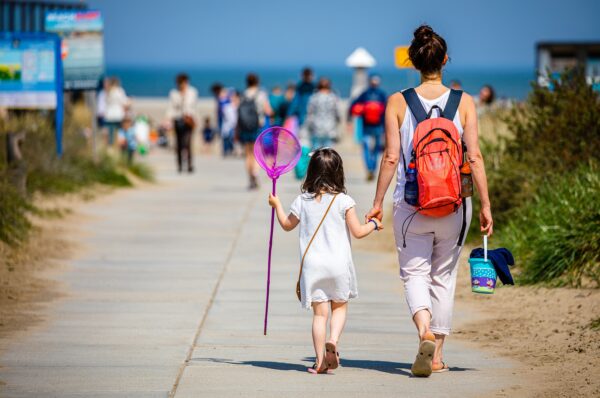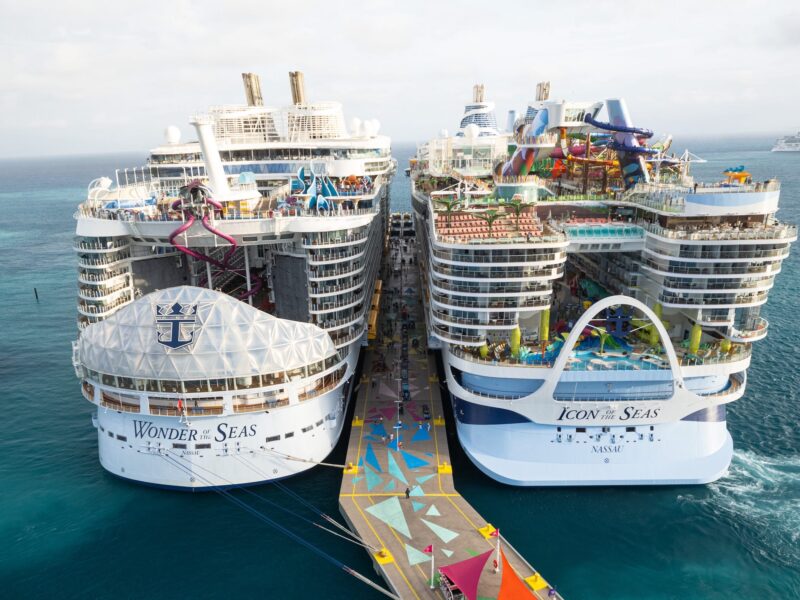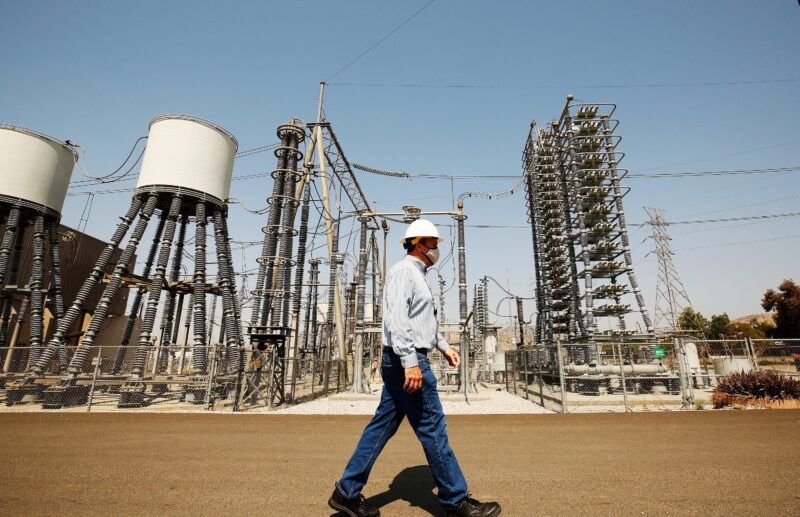- Hurtigruten, a Norwegian expedition cruise company, unveiled the world’s first hybrid cruise ship last year. It made its maiden voyage to Antarctica with 450 passengers aboard in November 2019.
- The ship was one of the first to resume cruising amid the coronavirus pandemic – and on Friday it reported a coronavirus outbreak, according to The Points Guy. Four crew members were admitted to the hospital and its next voyage has already been canceled.
- The vessel, MS Roald Amundsen, runs on low sulfur diesel fuel that is supported by battery packs, cutting emissions by 20%.
- The ship was designed to marry cutting edge science and technology with luxury: it is also equipped with an infinity pool, luxury suites, three restaurants, and a glass-encased sauna.
- Visit Business Insider’s homepage for more stories.
Hurtigruten’s MS Roald Amundsen made its maiden voyage in November 2019. It was designed to merge luxury and sustainability.
And the ship’s Rolls Royce-built engines started running again too soon after the coronavirus pandemic brought the cruise industry to its knees.
On Friday, The Points Guy reported that four crew members had been sick onboard for several days the Norwegian expedition cruise and isolated on the ship. They were admitted to the University Hospital of North Norway after the vessel docked after a seven-night cruise and tested positive for the coronavirus on Friday. Their symptoms hadn’t been consistent with COVID-19, the company said.
The ship’s remaining crew, or 160 people, were placed in isolation and are being tested for the coronavirus as well. Hurtigruten is also informing the 177 passengers who deboarded the ship on Friday to inform them of the outbreak.
The ship previously made changes like reducing capacity, ending buffet-style dining options, and increased cleanings, but the outbreak proves that cruises will remain docked for some time to come.
The MS Roald Amundsen is the world's first hybrid, battery-supported cruise ship. It made its maiden voyage to Antarctica with 450 passengers aboard in November 2019, according to Robb Report.
The MS Roald Amundsen's expedition to Antarctica was fitting - it was named after the eponymous legendary Norwegian polar explorer.
The 459-foot cruise ship is equipped with battery packs that support its low sulfur, diesel-powered, Rolls Royce-built engines. That's not to say the cruise is devoid of the lavish trappings of a typical cruise ship: There's also an infinity pool, a glass-encased sauna, three restaurants, and luxurious cabins on board. Throughout the ship, there are almost 600 works of art produced by young Norwegian artists, handpicked by the queen of Norway. Cruises aboard start at $14,720 per person.
Keep reading for a look inside the cruise ship.
The MS Roald Amundsen is the world's first hybrid cruise ship.

Source: Hurtigruten
It runs on Rolls Royce-built engines powered by low sulfur diesel fuel and batteries, which, according to the ship's developer, lowers the ship's CO2 emissions by 20%.
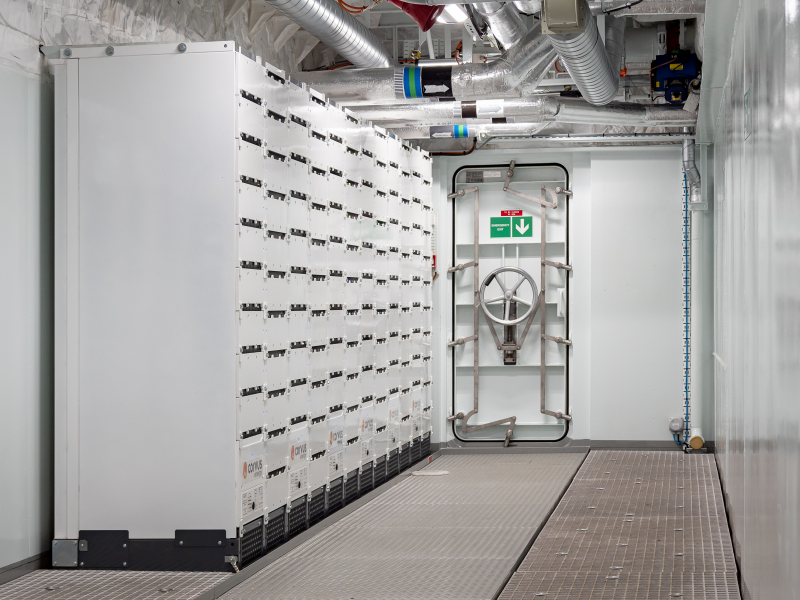
In addition to its operating systems, the ship is also committed to sustainability in other ways. There are no single-use plastics aboard and the uniforms worn by the crew are made from recycled ocean plastic.
Source: Hurtigruten
The cruise ship went on a full capacity, 18-day maiden voyage to Antarctica.
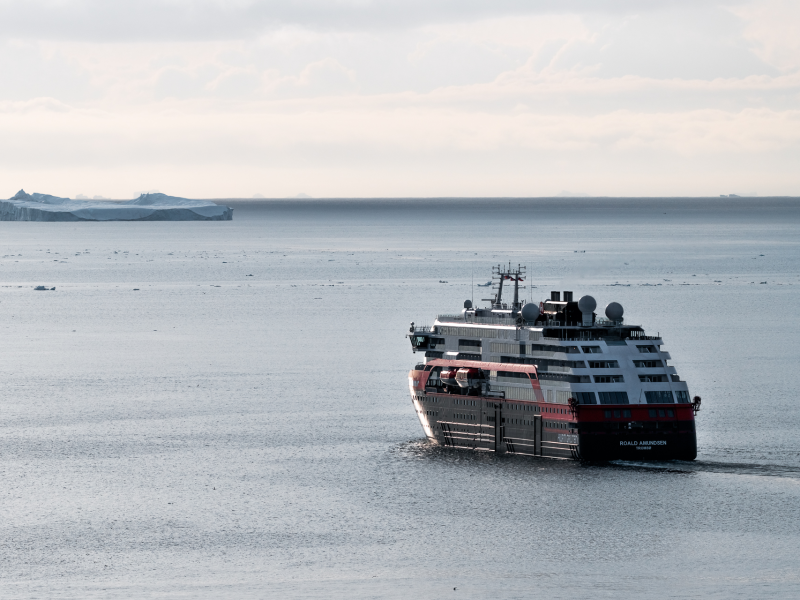
The maiden voyage started in Valparaíso, Chile, before cruising south along the coast of South America toward the Drake Passage. From there, the ship spent three days in Antarctica before returning to Punta Arenas, Chile.
Passengers could disembark in Antarctica and partake in activities including kayaking, hiking, whale-watching, and penguin-watching.
Source: Hurtigruten
And it's not just science and sustainability on board: Like other cruise ships that support travels of that length, the ship is flush with luxury amenities. The ship has 264 cabins.

Source: Hurtigruten
The Scandinavian-inspired interior design features oak, granite, birch, and wool throughout the cabins.

Source: Hurtigruten
All passengers have access to the infinity pool and the hot tubs on the observation deck ...
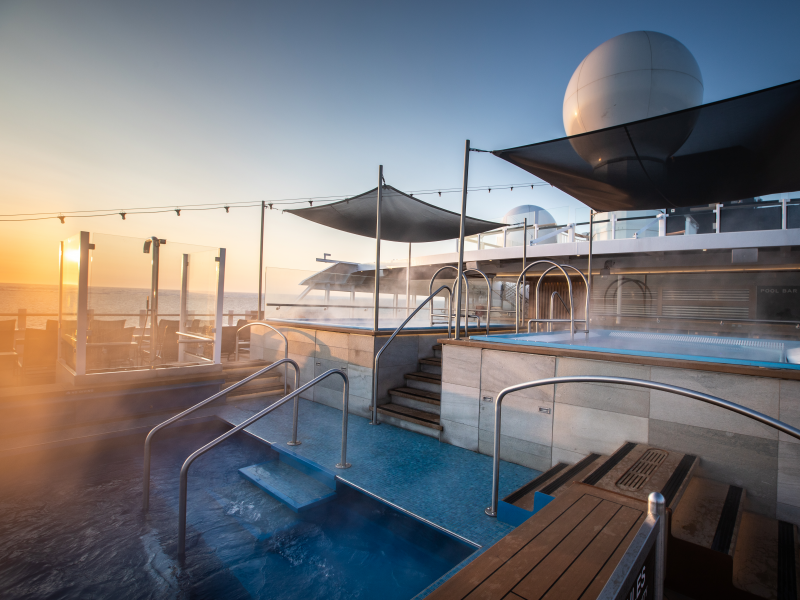
Source: Hurtigruten
... and the sauna and wellness center, which also offer sweeping views.

Source: Hurtigruten
The ship has amenities like a science center where passengers can attend lectures and learn more about Arctic exploration.

Source: Hurtigruten
The ship started cruising again this summer amid the coronavirus crisis, but had an outbreak among crew members. It has already canceled its next sail.

Source: Hurtigruten, The Points Guy
The MS Roald Amundsen is just one example of the luxury travel industry becoming more eco-friendly.

Business Insider previously reported that a model for the first hydrogen-powered yacht was unveiled in September 2019 by Sinot, a Dutch yacht-design company. The 367-foot vessel is completely powered by liquid hydrogen and fuel-cell technology. Its only emission is water.
Beyond boats, luxury African safaris are also embracing the eco-friendly. In August 2019, Business Insider's Katie Warren reported on a Botswana safari company equipped with conservation camps for children, where lessons on the environment, health, and nutrition are taught.
Increased attention to sustainability and conservation in the luxury travel sector play into the larger trend of "transformational travel." Ultimately, the ultra-wealthy want to leave their vacation with a transformative, emotional experience to bring home, and in some cases, want to make a positive impact on the places they visit.
But, those transformative experiences will likely have to wait as the coronavirus continues to upend travel as we know it.




